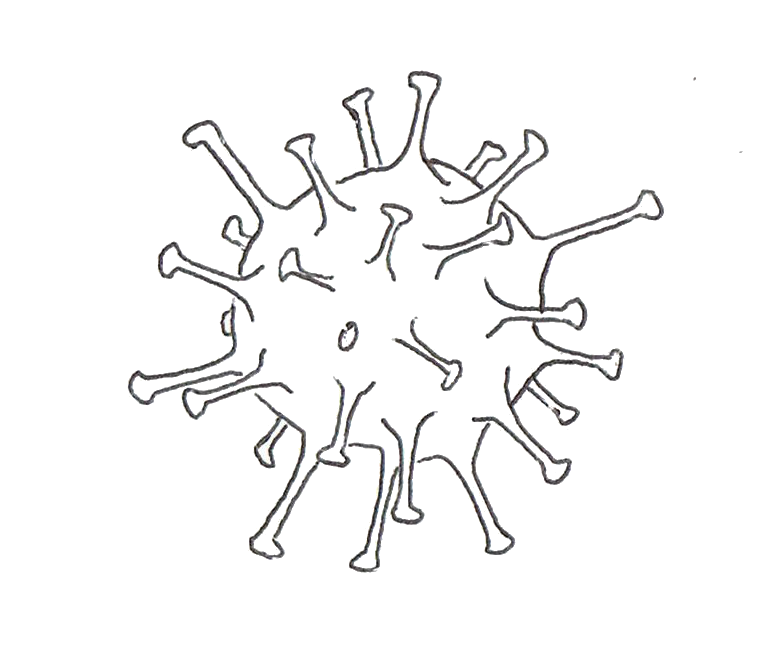
Prevention and preparedness:
Anthropological perspectives on the globalisation of influenza
Avian and swine flu, SARS, HIV and Ebola: viruses circulate worldwide and cross national boundaries without any trouble. Among them, the influenza virus plays an important role in international attempts to prevent, monitor and manage infectious diseases. Historical evidence now suggests that the Spanish flu in 1918 may have killed more than 50 million people, and the WHO has been cautioning against a new global flu pandemic for several years. During the H1N1 pandemic in 2009, a Public Health Emergency of International Concern (PHEIC) was declared, and the global pandemic alert level was raised from Phase 3 to Phase 5 within five days. A month later, it was raised to Phase 6. Although the pandemic was not as severe as many had feared, it became clear that the emergence of new viral agents is embedded in a transnational network, an assemblage consisting of diverging (technological, political, biomedical, administrative) actors, institutions and practices. A major aim of this research project is to trace the wider implications of this assemblage and its impact on current biomedical concepts of prevention and preparedness.
As epidemiological evidence from earlier epidemics seems to indicate, pathogens make use of transnational travel and trade routes, wherein mobility hubs such as Tokyo, Hong Kong or London seem to be of major importance: as a highly mobile phenomenon, influenza is often considered to be closely linked to globalisation processes. Seen from an anthropological point of view, emerging infectious diseases are not only of medical and epidemiological interest, but also possess social, (bio-)political and economic dimensions: the concept of a global pandemic has spread from biomedical expertise into wider areas of society. Currently, ideas of infection and prevention, of vaccination and security, of risk and mutation are having a profound impact on common self-care practices and body images; they are manifesting themselves in educational programmes on coughing and sneezing etiquettes, in vaccination policies and antiseptic cleansing wipes, in pandemic influenza response plans, and in emerging preparedness infrastructures. As medical history has shown, urban environments and infectious diseases are very closely related. It is in this context that cities are important sites for the distribution of highly mobile experts, tourists and travellers, but also in the concentration of (technical, political, medical and financial) resources. This suggests that cities are of major importance when it comes to the management and prevention of influenza: operating under the logic of preparedness, cities are subject to emergency planning and technologies of surveillance. The goal of this project is to unravel the close interdependency of human and viral worlds, of infectious diseases and urban environments, from the perspective of cultural anthropology.
The project employs a multi-sited ethnographic approach and combines qualitative methods such as guideline-based interviews, participant observation and document analysis. It focuses on institutions and experts who work on the translation of virological knowledge into the conception of (urban) preparedness, on the implementation of preventive measures, and on their communication to the broader public. The research focuses on the following topics:
1) How is virological knowledge transferred into pandemic planning?
2) Which new forms of prevention and preparedness emerge under these circumstances?
3) What kind of risk communication and health promotion does pandemic preparedness create?
Funded by the German Research Association (Deutsche Forschungsgemeinschaft, DFG), October 2011 – September 2015.
Team: Kevin Hall (research fellow), Laura Kocksch (student assistant)
Thus far, the following publications have emerged from this research:
• (together with K. Hall) Whose crisis? Pandemic flu, ‘communication disasters’ and the struggle for hegemony. In: Health: An Interdisciplinary Journal for the Social Study of Health, Illness and Medicine 5 (2021), 322-338 (pdf).
• (together with K. Hall) Cyborg preparedness: incorporating knowing and caring bodies into emergency infrastructures. In: Medical Anthropology 6 (2018), special issue Technologies and Materialities of Epidemic Control, 486-498 (abstract).
• Knowing pandemics: an investigation into the enactment of pandemic influenza preparedness in urban environments. In: Science & Technology Studies 4 (2017), special issue STS and Global Health, 8-29 (pdf).
• Rethinking urban epidemiology: natures, networks, and materialities. In: International Journal of Urban and Regional Research 40 (2016), 958-982 (pdf).
• Globale Bedrohungen, lokale Antworten. Kulturanthropologische Überlegungen zur Influenza-Preparedness. In: P. Zoche, S. Kaufmann & H. Arnold (eds.): Grenzenlose Sicherheit? Gesellschaftliche Dimensionen der Sicherheitsforschung. Berlin 2016: Lit Verlag (more information).
• Mikrobiopolitik in Kulturanthropologie und Europäischer Ethnologie: Ein Versuch der Annäherung an mikrobielle Beiträge zur Wissensproduktion. In: S. Cayuela (ed.): Biopolítica y Ciencias Sociales. Sociología Histórica 5 (2015), 281-304 (pdf).
• Microbiopolítica en Antropología cultural y Etnología europea: Un intento de aproximación a las contribuciones microbianas a la producción del conocimiento. In: S. Cayuela (ed.): Biopolítica y Ciencias Sociales. Sociología Histórica 5 (2015), 305-330 (pdf).
• Is there really such a thing as “one health”? Thinking about a more than human world from the perspective of cultural anthropology. In: Social Science & Medicine 129 (2015), special issue One World, One Health? Social science engagements with the one medicine agenda, 5-11 (abstract).
• Viral apocalypses: Preparing for the worst case scenario. In: A. A. Hernandez (ed.): Apocalypse. Imagining the end. Inter-Disciplinary Press 2014.
• Auf alles gefasst sein. In: forschung. Das Magazin der Deutschen Forschungsgemeinschaft 38 (2013), 12-15.
• Prepared for Anything. In: research. Magazine of the Deutsche Forschungsgemeinschaft 2 (2013), 18-21.
• Crossing borders, crossing species: The H1N1-virus in the interplay between “nature” and “culture”. In: K. Pauknerova, M. Stella & P. Gibas (eds.): The non-human in anthropology. Prague 2012: Pavel Mervart, 201-217.
• Influenza and the concept of infection: Reflections on bodily boundaries. In: Antropologija / Anthropology 12 (2012), 107-121.
• Zoonoses: Towards an urban epidemiology. In: M. Gandy (ed.): Urban Constellations. Berlin 2011: Jovis, 75-79 (more information).
